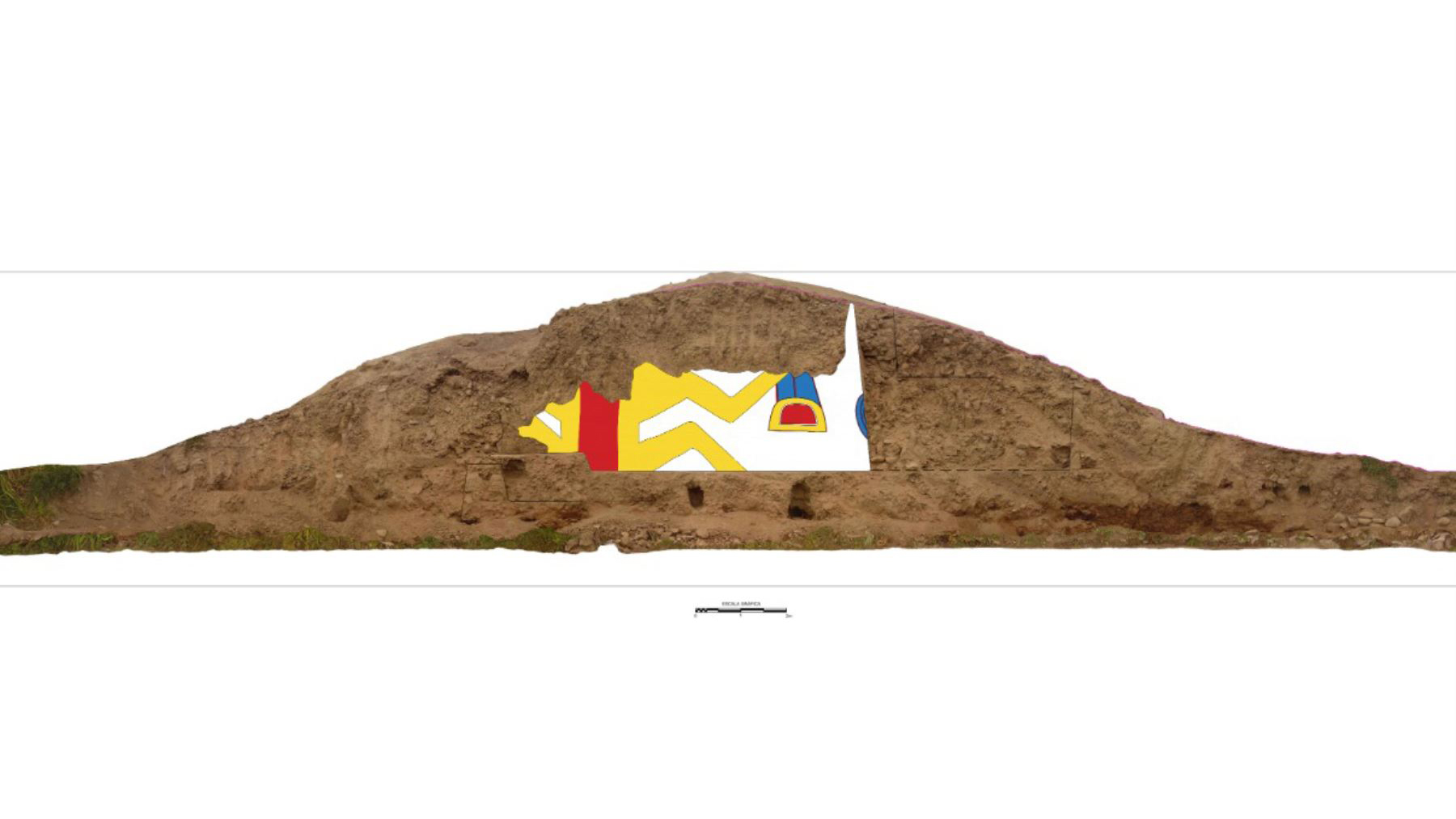Knife-wielding spider god mural unearthed in Peru
The site dates to around 3,200 years ago.

An ancient ceremonial building that was built thousands of years ago in northwestern Peru's La Libertad region was decorated with a painting of a spider deity clutching a knife. Archaeologists discovered the mural in November 2020, after local farmers damaged the temple structure during the expansion of their sugar cane and avocado plantations.
When scientists inspected the monument ("huaca" in the Indigenous Quechuan family of languages), they found a figure painted against a white background on the southern wall, in shades of ocher, yellow and gray, the Peruvian national daily newspaper La República reported.
Régulo Franco Jordán, director of archaeological investigations for the Augusto N. Wiese Foundation, a Peruvian cultural nonprofit organization, recently told La República that the huaca was around 3,200 years old and likely had ritual significance. The figure in the mural was "a stylized zoomorphic being" — a human-animal hybrid deity — that could be part spider, which was an important animal in the pre-Columbian Cupisnique culture, Jordán said (translated from Spanish with Google Translate).
Related: Photos: Ancient circular geoglyphs etched into the sand in Peru
The wall holding the spider god mural faces a river bisecting the Virú Valley, according to La República. This likely meant that the deity had a connection to water, and that sacred ceremonies were probably performed in the temple during the rainy season between January and March, when water levels in the river would be highest, according to Jordán.
Cupisnique culture prevailed along Peru's northern coast from around 1250 B.C. to A.D. 1, and Indigenous people produced the region's first known temples during that time, according to the Larco Museum, a privately owned museum in Lima showcasing pre-Columbian art. Spider deities were frequently represented on pottery plates and cups, and were associated with fertility, the Peruvian national news agency Andina reported.

About 60% of the temple was destroyed by the farmers' construction; all that remained was a small building measuring about 16 feet (5 meters) tall and 49 feet (15 m) wide. To protect the huaca — dubbed "Tomabalito" after el Castillo de Tomabal, another archaeological site in the vicinity — Jordán contacted the Peruvian Ministry of Culture's decentralized office in La Libertad and requested that they perform an "emergency intervention" to limit access to the site until the current coronavirus restrictions are lifted, according to Andina.
Sign up for the Live Science daily newsletter now
Get the world’s most fascinating discoveries delivered straight to your inbox.
"The site has been registered and the discovery will be covered up until the pandemic is over and it can be properly investigated," Jordán told La República.
Originally published on Live Science.

Mindy Weisberger is an editor at Scholastic and a former Live Science channel editor and senior writer. She has reported on general science, covering climate change, paleontology, biology and space. Mindy studied film at Columbia University; prior to Live Science she produced, wrote and directed media for the American Museum of Natural History in New York City. Her videos about dinosaurs, astrophysics, biodiversity and evolution appear in museums and science centers worldwide, earning awards such as the CINE Golden Eagle and the Communicator Award of Excellence. Her writing has also appeared in Scientific American, The Washington Post and How It Works Magazine. Her book "Rise of the Zombie Bugs: The Surprising Science of Parasitic Mind Control" will be published in spring 2025 by Johns Hopkins University Press.










